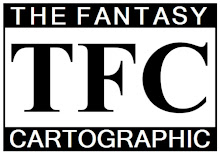I seem to come back to it occasionally. I just can't help it. I enjoy reading about it, I enjoy trying my hand at it, I just enjoy it.
I recently came across a blog that I find very interesting: 20th Level Marketing. I really like the post here about pricing products and sales. I agree with him completely regarding his thoughts on pricing digital products. Now if only more people (in the OSR) actually bought them...
Friday, September 10, 2010
Subscribe to:
Post Comments (Atom)








Interesting read.
ReplyDeleteInvariably, however, there are almost always some people willing to pay for for a product and their willingness should not be turned down, from a business perspective. For example, were you sell 100 units of product at $10 and then lower the price to $1 to sell the remaining 9900, you've made 9% more than were you to have sold 10,000 at $1. IMO, starting at a higher price point and moving down is better than starting too low.
edit: "willing to pay MORE for a product" - doh!
ReplyDeleteI've been meaning to write a post on this very topic for quite some time. I guess I have a few points to make:
ReplyDelete1. I understand your opinion. And someone else may have another opinion. My question: Is starting high and moving low quantitatively better or is it better to start lower? I guess there is no way to really find out, unless you are a big company that can do research to try to figure that out. I don't think anyone in the OSR (or perhaps even outside of it, with one or two exceptions) has the money to spend on research like that.
2. Does the demand curve operate exponentially for these products, meaning that if I lower the price by some amount, will the increase in sales offset the drop in per unit profits?
I'm definitely curious.
1. I think starting high and moving low is quantitatively better, if one assumes that a product has a maximum number of sales before the market is satisfied with a single particular product. Say if a product has a maximum sales # of 10,000 (there are only that many people in the world that would considered buying the product), it is best to have those who are willing to pay more to be "early adapters" actually pay more in the beginning. Then as price becomes more of a factor in the purchasing decision for customers, the price of the item can come down. For a good and at least somewhat analogous example, think of how Apple does business. They price high out the gate, get those willing to pay high, and then discount.
ReplyDelete2. I think that's a much tougher question. In my experience, it has not been the case. If one cuts the price of a product in half, one doesn't always get twice (or more) as many sales. However, my experience is far from the experience of the "big boys" in the industry. I've always been a small publisher.